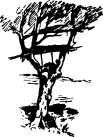Wagemin, the thief of cornfields, Paimosaidi who steals the maize-ear.
' If one of the young female buskers finds a red ear of com. it is typical of a brave admirer, and is regarded as a fitting present to some young warrior. But if the ear be crooked* and tapering to a point, no matter what color, the whole circle is set in a roar, and wa-gewiin is the word shouted aloud. It is the symbol of a thief in the cornfield. It is considered as the image of an old man stooping as he enters the lot. Had the chisel of
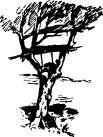

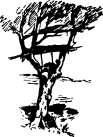
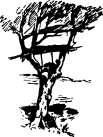
Praxiteles been employed to produce this image, it could not more vividly bring to the minds of the merry group the idea of a pilferer of their favorite mondamin. . . .
'The literal meaning of the term is, a mass, or crooked ear of grain ; but the ear of corn so called is a conventional type of a little old man pilfering ears of corn in a cornfield. It is in this manner that a single word or term, in these curious languages, becomes the fruitful parent of many ideas. And we can thus perceive why it is that the word wagemin is alone competent to excite merriment in the husking circle.
' This term is taken as a basis of the cereal chorus, or corn song, as sung by the Northern Algonquin tribes. It is coupled with the phrase Paimosaid, – a permuta-tive form of the Indian substantive, made from the verb pim-osa, to walk. Its literal meaning is, he who icalks, or the walker ; but the ideas conveyed by it are, he who walks by night to pilfer corn. It offers, therefore, a kind of paralleism in expression to the preceding term.' – Onedta, p. 254.
Page 161. Pagasaing, with thirteen pieces.
This Game of the Bowl is the principal game of hazard among the Northern tribes of Indians. Mr. Schoolcraft gives a particular account of it in Onedta, p. 85. 'This game,' he says, 'is very fascinating to some portions of the Indians. They stake at it their ornaments, weapons, clothing, canoes, horses, every thin g in fact they possess; and have been known, it is said, to set up their wives and children, and even to forfeit theii own liberty. Of such desperate stakes I have seen no examples, nor do I think the game itself in common use. It is rather confined to certain persons, who hold the relative rank of gamblers in Indian society, – men who are not noted as hunters or warriors, or steady providers for their families. Among these are persons who bear the term of Ienadizze-wug, that is, wanderers about the country, braggadocios, or fops. It can hardly be classed with the popular games of amusement, by which skill and dexterity are acquired. I have generally found the chiefs and graver men of the tribes, who encouraged the young men to play ball, and are sure to be present at the customary sports, to witness, and sanction, and applaud them, speak lightly and disparagingly of this game of hazard. Yet it cannot be denied that some of the chiefs, distinguished in war and the chase, at the West, can be referred to as lending their example to its fascinating power.'
See also his History, Conditions, and Prospects of the Indian Tribes, Part IL p. 72.
Page 181. To the Pictured Mocks of sandstone.
The reader will find a long description of the Pictured Rocks in Foster and Whitney's Heport on the Geology of the Lake Superior Land District, Part II. p. 124. From this I make the following extract: -
'The Pictured Rocks may be described, in general terms, as a series of sandstone bluffs extending along the shore of Lake Superior for about five miles, and rising, in most places, vertically from the water, without any beach at the base, to a height varying from fifty to nearly two hundred feet. Were they simply a line of cliffs, they might not, so far as relates to height or extent, be worthy of a rank among great natural curiosities, although such an assemblage of rocky strata, washed by the waves of the great lake, would not, under any circumstances, be destitute of grandeur. To the voyager, coasting along their base in his frail canoe, they would, at all times, be an object of dread ; the recoil of the surf, the rock-bound coast, affording for miles no place of refuge, – the lowering sky, the rising wind, – all these would excite his apprehension, and induce him to ply a vigorous oar until the dreaded wall was passed. But in the Pictured Rocks there are two features which communicate to the scenery a wonderful and almost unique character. These are, first, the curious manner
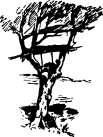
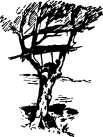
in which the cliffs have been excavated and worn away by the action of the lake, which, for centuries, has dashed an ocean-like surf against their base; and, second, the equally carious manner in which large portions of the surface have been colored by bands of brilliant hues.
' It is from the latter circumstance that the name, by which these cliffs are known to the American traveller, is derived ; while that applied to them by the French voyageurs (' Les Portails') is derived from the former, and by far the most striking peculiarity.
' The term Pictured Rocks has been in use for a great length of time; but when it was first applied, we have been unable to discover. It would seem that the first travellers were more impressed with the novel and striking distribution of colors on the surface than with the astonishing variety of form into which the cliffs themselves have been worn. . . .
' Our voyageurs had many legends to relate of the pranks of the Menni-bojou in these caverns, and, in answer to our inquiries, seemed disposed to fabricate stories, without end, of the achievements of this Indian deity.'
Page 218. Toward the sun his hands were lifted.
In this manner, and with such salutations, was Father Marquette received by the Illinois. See his Voyages et DicouverteSy Section V.
